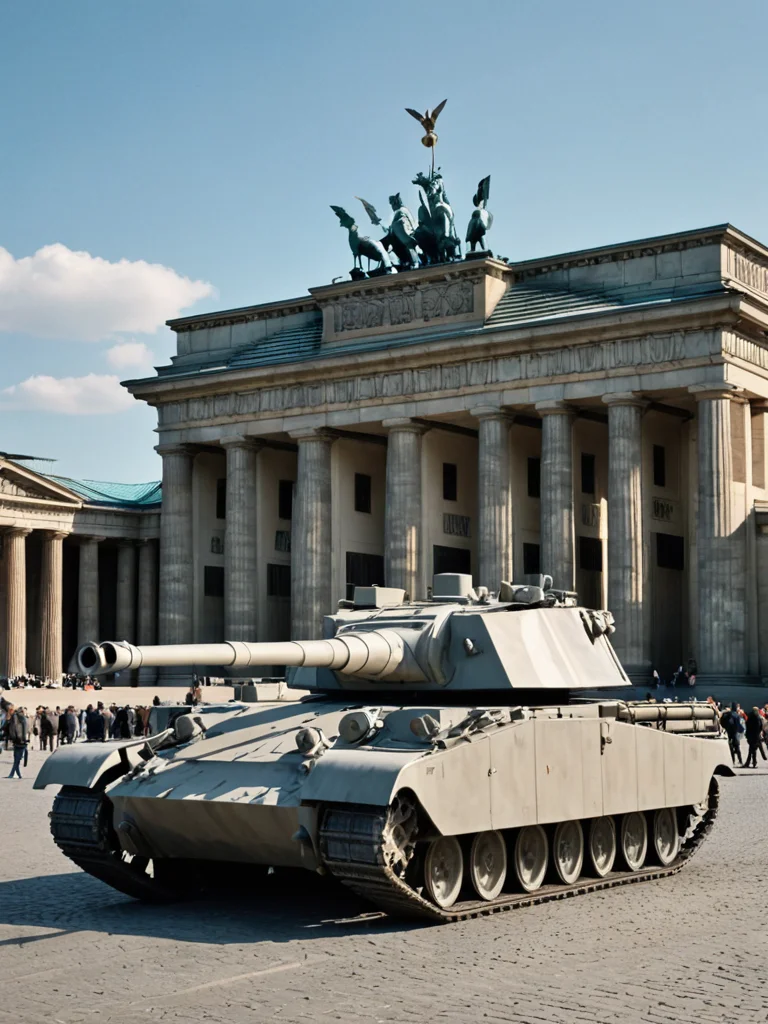Berlin, a city located in the heart of Europe, became one of the main symbols of the Cold War, a painful reminder of the world divided into two hostile blocs. Its history during this period is full of drama, heroism, and tragedy. Divided by a wall, it became not just a geographical point, but an arena for the clash of ideologies and a place where the fates of millions of people were decided. In this article, we will delve into the daily life of the divided city, explore how political confrontation affected the everyday life, culture, and hopes of its inhabitants, and trace the path from division to reunification.
A Divided City: Berlin at the Crossroads of the Cold War – An Overview and Prerequisites
To understand the full depth of the tragedy of divided Berlin, it is necessary to turn to the origins of the Cold War. After the end of World War II, Germany, as a defeated country, was divided into four occupation zones: Soviet, American, British, and French. Berlin, located in the Soviet zone, was also divided into four sectors, which created a unique but extremely unstable situation.
The differences in political and economic systems between the Soviet Union and the Western Allies became increasingly apparent. While the Western powers sought the reconstruction of Germany based on democratic principles and a market economy, the USSR saw Germany as an important bridgehead for spreading communist influence. These contradictions led to a rapid deterioration of relations between the allies and, ultimately, to the formation of two opposing blocs.
In 1948, the Soviet Union attempted to establish full control over West Berlin by blocking all land and water routes connecting the city to the Western occupation zones. This move, known as the Berlin Crisis, could have led to starvation and the collapse of the western part of the city. However, the Western Allies responded by organizing an airlift, through which food, medicine, and other necessary resources were delivered to West Berlin. This unprecedented operation lasted for over a year, demonstrating the West’s determination to protect the freedom and independence of West Berlin. The blockade failed, but tensions in the city remained high.
After the failure of the blockade, the division of Germany and Berlin became a fait accompli. In 1949, the Federal Republic of Germany (FRG) was established on the territory of the Western occupation zones, and the German Democratic Republic (GDR) was established in the Soviet zone. Berlin, thus, was divided into two parts: West Berlin, under the control of the Western Allies, and East Berlin, which became the capital of the GDR.
West Berlin, despite its geographical location, became a kind of “island of freedom” surrounded by a communist state. It enjoyed significant economic support from Western countries and became a showcase of the Western way of life. At the same time, East Berlin, under strong Soviet influence, developed along the socialist path. These differences in political and economic systems led to constant tension and conflict between the two parts of the city.
On Both Sides of the Wall: How Daily Life Differed in East and West Berlin
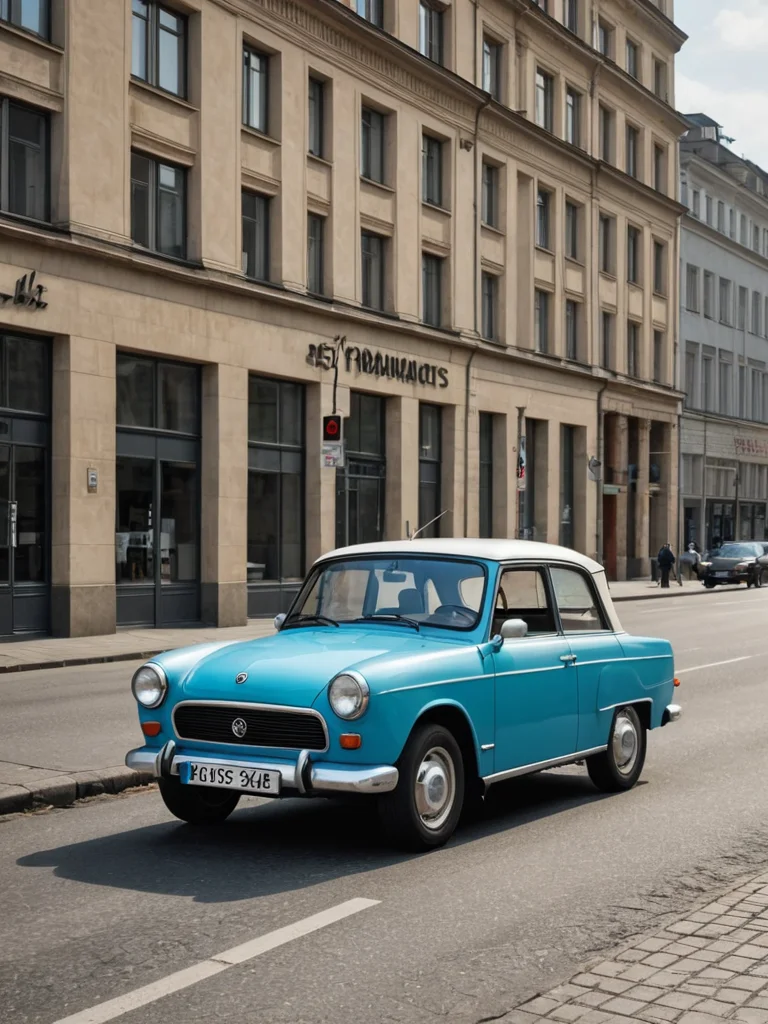
Life in East and West Berlin differed significantly, reflecting the ideological and economic disparities between the two systems. In West Berlin, there was an atmosphere of freedom and openness. Residents could move freely around the city, had access to Western media, and enjoyed the benefits of a market economy. Shops offered goods from all over the world, and cultural life was rich with various events – from concerts and exhibitions to theatrical performances and film screenings. West Berlin was an attractive place for young people seeking self-realization and new opportunities.
In East Berlin, life was more regulated and controlled. The state played a decisive role in all spheres of life – from the economy and education to culture and leisure. Freedom of speech and assembly was restricted, and criticism of the government was persecuted. The economy was planned, which led to a shortage of many goods and services. Residents of East Berlin faced a constant shortage of quality clothing, household appliances, and other consumer goods. Despite this, the state provided residents with a certain level of social protection, including free education and healthcare.
The wall, erected in 1961, became the physical embodiment of Berlin’s division and a symbol of the Cold War. It cut off residents of East Berlin from the West, depriving them of the ability to move freely and communicate with relatives and friends. The wall became not only a physical barrier but also a psychological one, dividing families, destinies, and life paths.
One example: Imagine a family where grandparents lived in East Berlin, and their children and grandchildren lived in the West. Before the wall was built, they could visit each other freely, celebrate holidays together, and spend weekends. After 1961, they were separated, and communication became possible only on rare occasions and under strict control. This is just one of millions of examples of how the wall destroyed people’s lives and separated families.
Life in East Berlin was permeated with an atmosphere of suspicion and fear. The Stasi, the GDR’s Ministry for State Security, had a vast network of informants and monitored every citizen’s step. Any criticism of the government could lead to serious consequences, including arrest and imprisonment. Despite this, many East Berlin residents found ways to resist the regime, showing solidarity and supporting each other in difficult times.
In West Berlin, on the contrary, there was an atmosphere of freedom and democracy. Residents could freely express their opinions, participate in political life, and enjoy all the benefits of Western society. West Berlin became a center of underground culture, where alternative art, music, and fashion flourished. Many young people came to West Berlin to avoid military conscription and enjoy the freedom and opportunities the city offered.
To illustrate: We can cite an example with the music scene. In West Berlin, punk rock, new wave, and other alternative genres flourished, expressing protest against the establishment and conservative values. In East Berlin, on the other hand, the music scene was more controlled, and musicians had to adhere to certain rules and frameworks. Nevertheless, underground music groups also existed in East Berlin, playing music banned by censorship.
The Price of Freedom and Fear: Stories of Escapes and Tragedies at the Berlin Wall
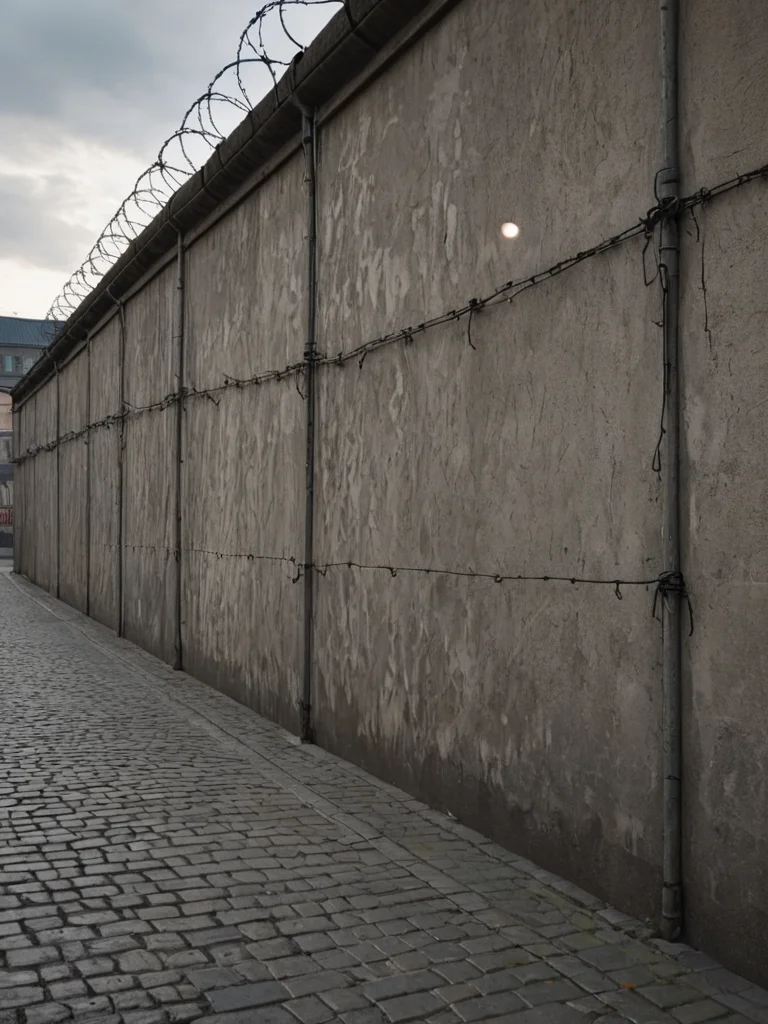
The Berlin Wall became not only a symbol of division but also a place of tragedy and heroism. Thousands of people tried to escape from East Berlin to the West, risking their lives. Escapes were carried out in various ways: through tunnels, by air, in car trunks, and even by swimming across the Spree River. Many of these attempts ended tragically: GDR border guards shot at escapees, and hundreds of people died trying to gain freedom.
Let’s consider an example: Peter Fechter, an 18-year-old construction worker, tried to cross the wall in August 1962. He was wounded by border guards and fell into the death strip, where he bled to death in front of Western journalists and West Berlin residents. Western border guards could not help him, as he was on GDR territory. Peter Fechter died from blood loss, becoming one of the most famous symbols of the brutality of the Berlin Wall.
Stories of successful escapes are also full of heroism and ingenuity. People showed incredible wit and courage to overcome the wall and gain freedom. Some escapees dug tunnels under the wall, others used forged documents and disguised themselves in Soviet soldier uniforms. There were cases where people flew over the wall in homemade balloons or hang gliders.
One of the most famous examples of a successful escape is the story of the Strelzig family, who built a hot air balloon and flew from East Germany to the West. This story became a symbol of hope and faith in freedom. The Strelzig family secretly prepared for the escape for several months, gathering information about weather conditions and constructing a balloon from fabric they sewed together. In September 1979, they successfully crossed the border and landed in Bavaria.
West Berlin became a refuge for many escapees from East Germany. The city offered them new opportunities for life and self-realization. However, adapting to a new life was not always easy. Many escapees experienced psychological difficulties related to the stress they endured and the separation from their loved ones. Western society was also not always ready to welcome refugees with open arms, and many of them faced discrimination and prejudice.
It is important to note: Escapes across the Berlin Wall were not only individual acts of protest but also a form of political resistance. They demonstrated the failure of the communist regime and people’s desire for freedom and democracy. The escapes exerted psychological pressure on the GDR authorities and undermined their authority.
The Cultural Front: How Art, Music, and Fashion Reflected the Spirit of Divided Berlin
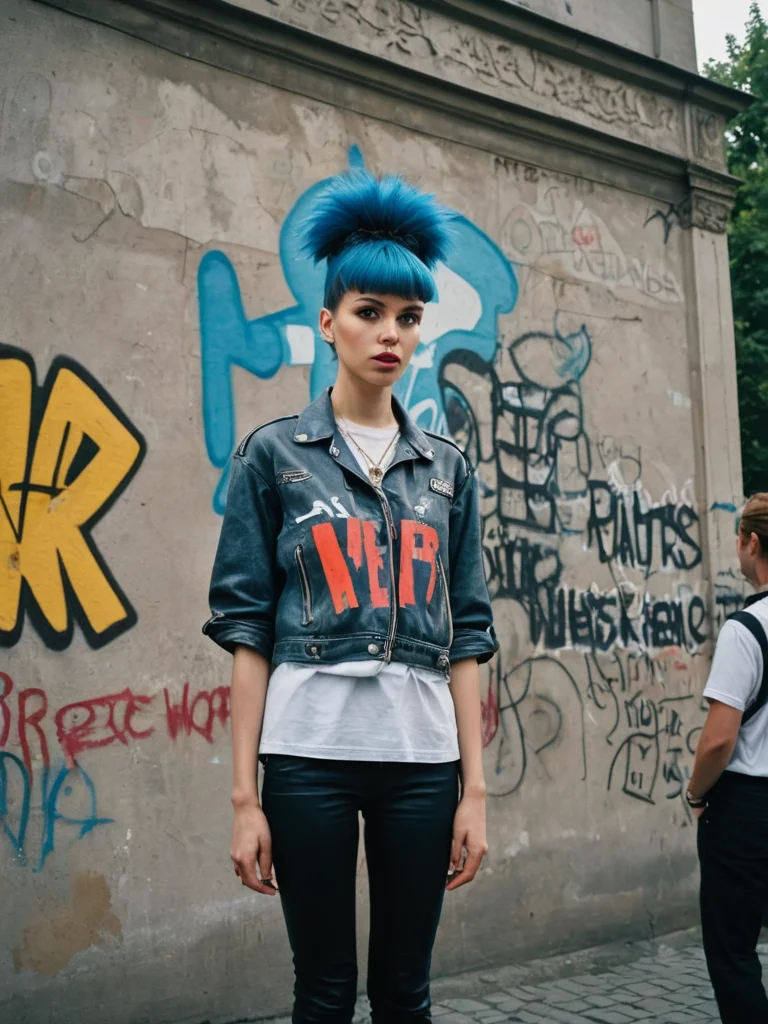
Divided Berlin became a unique cultural space where art, music, and fashion reflected the spirit of the times and the moods of people on both sides of the wall. In West Berlin, alternative culture flourished, expressing protest against conservative values and the political establishment. New musical genres such as punk rock and new wave emerged here, reflecting feelings of alienation and disillusionment in society. Artists created provocative works of art criticizing the political system and exposing social injustice. Fashion was also a means of self-expression and protest, reflecting the rebellious spirit of youth.
In East Berlin, despite censorship and state control, its own cultural scene also existed. Artists and musicians found ways to express their views using metaphors and allusions. Underground music groups played music banned by censorship, and artists created works of art criticizing the socialist regime. Cultural life in East Berlin was permeated with an atmosphere of resistance and a desire for freedom.
For example: East German rock, although under censorship pressure, managed to become the voice of a generation, expressing hidden protest against the regime. Bands like Silly and Karat used poetic lyrics and complex musical arrangements to bypass censorship restrictions and convey their ideas to listeners.
The wall itself became an object of art. Western artists used it as a canvas for their works, creating bright and provocative graffiti expressing protest against the division of the city and the world. Graffiti on the Berlin Wall became a symbol of freedom and hope, attracting tourists from all over the world. The eastern side of the wall remained gray and lifeless, reflecting oppression and the lack of freedom of expression.
Interestingly: One of the most famous artists who left their mark on the Berlin Wall was Keith Haring. His bright and symbolic drawings became a symbol of hope and peace, calling for the unification of the divided city.
Cultural exchanges between East and West Berlin were extremely limited, but they did exist. Western musicians and artists sometimes visited East Berlin for concerts and exhibitions, and Eastern artists visited the West. These exchanges were an important factor in maintaining cultural dialogue and contributed to breaking down stereotypes and prejudices between people on both sides of the wall.
It is important to remember: Culture in divided Berlin was not just entertainment but a form of political resistance and a way to preserve national identity. It helped people overcome difficulties and maintain hope for a better future.
The Fall of the Wall and Reunification: How Berlin Became a Symbol of Hope and a New Era
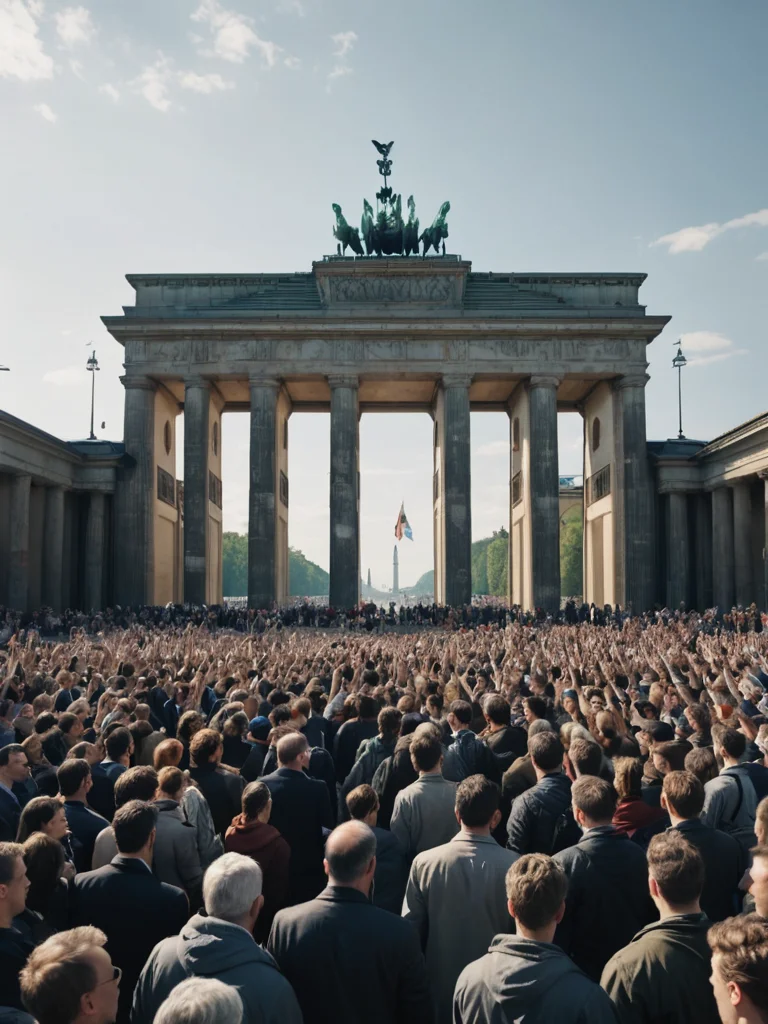
The fall of the Berlin Wall in November 1989 was one of the most significant events in the history of the 20th century. It marked the end of the Cold War and the beginning of a new era in the history of Europe and the world. The spontaneous opening of the border between East and West Berlin was the result of years of struggle for freedom and democracy, as well as a sign of the deep crisis of the communist regime in the GDR.
In the weeks following the fall of the wall, residents of East and West Berlin celebrated reunification, hugged, danced, and tore down the wall with their own hands. These were days of unprecedented uplift and enthusiasm, when people believed in the possibility of building a new, free, and democratic society.
How it happened: The decision to open the border was made by the GDR leadership under pressure from mass protests and the flight of citizens to Western countries through Hungary and Czechoslovakia. On November 9, 1989, GDR government spokesman Günter Schabowski announced at a press conference new regulations for leaving the country, according to which GDR citizens could freely visit West Berlin and the FRG. Due to the imprecise wording and lack of clear instructions, many people understood this announcement as permission to cross the border immediately. Thousands of East Berlin residents headed to the border crossings, demanding that the passage be opened. Border guards, not having received clear instructions, eventually opened the border, and people flooded into the western part.
The reunification of Germany in 1990 was the logical conclusion of the process of the fall of the Berlin Wall. Germany became a unified state again, based on the principles of democracy, a market economy, and respect for human rights. Berlin, which became the capital of united Germany, turned into a symbol of hope and a new era.
It is important to realize: The reunification of Germany was a complex and painful process. Residents of East Germany faced serious economic and social difficulties associated with the transition from a planned economy to a market economy. Many people lost their jobs and had to retrain and adapt to new living conditions. Despite this, the reunification of Germany was an important step towards building a united and free Europe.
Berlin today is a modern, dynamic, and cosmopolitan city that attracts tourists, investors, and creative people from all over the world. It is one of the main cultural and economic centers of Europe, a symbol of tolerance, freedom, and democracy.
Conclusion: The history of divided Berlin is a story of tragedy and heroism, division and reunification, fear and hope. It teaches us to value freedom, fight for justice, and build a world based on respect and understanding between peoples. Berlin has become a symbol that even the strongest walls can be torn down if people unite in their pursuit of freedom and democracy.
